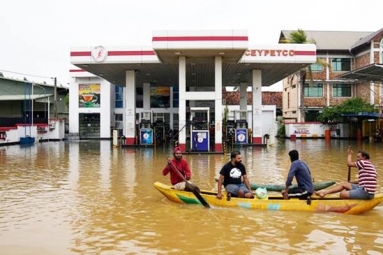
(Image source from: x.com/WhiteHouse)
One of the initial executive actions taken by Donald Trump upon his inauguration as President of the United States on January 20 was the declaration of a "national emergency" at the southern border. This decree included a provision that allowed President Trump the option to "invoke the Insurrection Act of 1807" and potentially deploy military forces on U.S. territory as of April 20, which is ninety days post-signing of the order. This particular clause within Trump's executive order on January 20 specified that "Within 90 days of the date of this proclamation, the Secretary of Defense and the Secretary of Homeland Security shall provide a joint report to the President regarding the situation at the southern border of the United States and any recommendations for further actions necessary to achieve full operational control of the southern border, including the potential invocation of the Insurrection Act of 1807."
The Insurrection Act of 1807 empowers the President to permit military and National Guard deployment under specific conditions to ensure enforcement of the law. It grants the military the authority to effectively extinguish any insurrections, rebellions, or acts of violence, including those committed by civilians. This act can supersede the Posse Comitatus Act, which typically restricts military involvement in civilian law enforcement, thereby allowing the President—who serves as the commander-in-chief of the armed forces—to determine the timing, location, and conditions for the deployment of troops within the United States.
However, the Insurrection Act differs from martial law. While martial law transfers complete administrative authority and control over state affairs to a military officer—usually the chief of defense staff—under the Insurrection Act, the authority of state governance and administration remains with the U.S. President, who selectively exercises military power to uphold law and order. Thus, while martial law permits military forces to assume control over civil governance in emergencies, the Insurrection Act restricts military intervention to supporting civilian authorities rather than replacing them.
Legal scholars have long contended that the Insurrection Act of 1807 is outdated, alarmingly ambiguous, and in dire need of revision. The Brennan Center for Justice asserts that "the Insurrection Act requires a significant reworking." They emphasize that this legislation "empowers the President to mobilize the US military within the country and to act against American citizens under specific circumstances. Although there may be exceptional instances where such powers could be warranted, the law has remained largely unchanged for over 150 years, making it excessively expansive and susceptible to misuse."
Furthermore, the advocacy group points out that "the language of the Insurrection Act does not clarify the terms 'insurrection,''rebellion,''domestic violence,' or any other critical definitions necessary for the conditions required for military deployment." This lack of definition poses risks for potential misinterpretation. As the 90-day timeframe mentioned in Trump’s January 20 executive order approaches its conclusion, a considerable portion of the US populace now suspects that President Donald Trump will "invoke the Insurrection Act" and send military forces on April 20.
On January 22, 2025, just two days after Trump's executive initiative, the US Department of Defense declared its intention to deploy 1,500 active-duty troops to the southern border, along with supplementary air and intelligence resources to support various federal agencies and military branches focused on border enforcement.
In a further announcement on January 29, 2025, Secretary of Defense Pete Hegseth confirmed plans to accommodate up to 30,000 illegal migrants at Guantanamo Bay, Cuba, following the President’s decision to issue an executive order instructing the Department of Defense to proceed with this action.
However, since that announcement, there have been no noteworthy developments. Both the Secretary of Defense and the Secretary of Homeland Security have yet to deliver their conclusive report to the US President, providing updates on the progress of the operation. This uncertainty has led many to believe that the outdated law may soon be enacted to establish "complete control over the southern border," which aligns with the current administration's objectives.



















